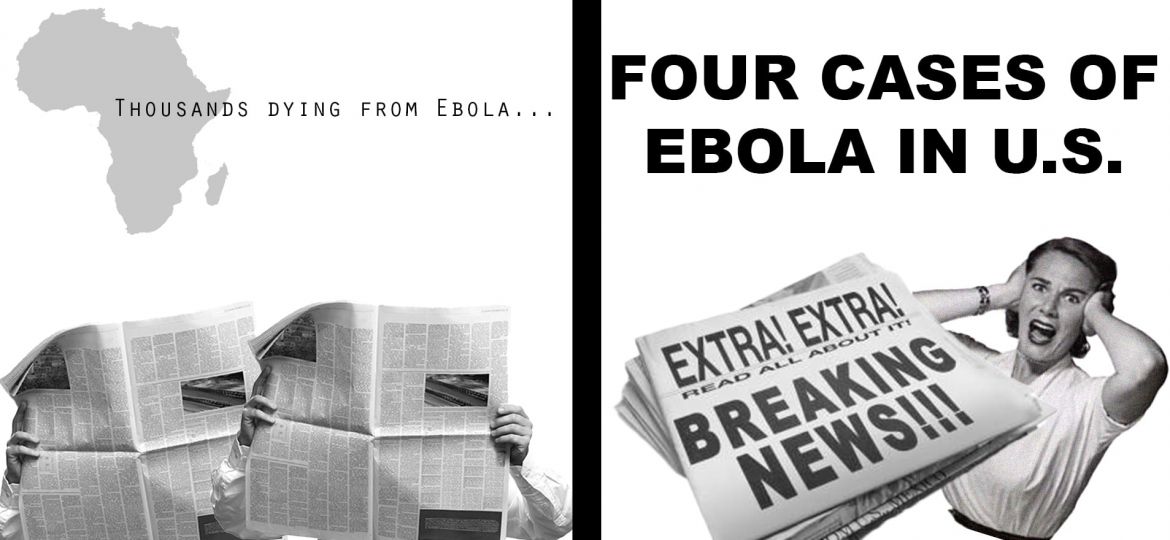
David W. Dunlap has worked at the New York Times as a metro reporter for 39 years, witnessing an astonishing number of events and helping decide how the press covers them. Currently, he writes a column for the Times called “Looking Back,” reflecting on coverage of items from 9/11 to Joe DiMaggio’s wedding to Marilyn Monroe. One of his recent articles discusses reporter inaction during the AIDS crisis and the day an article about AIDS finally made the front page of the Times, but only after the disease claimed 558 lives.
Today this seems shocking to us, especially in the wake of incessant reporting on the spread of Ebola and its admittedly small threat in the United States. How could a disease as terrible as AIDS go uncovered for so long? Did the media not realize it was happening, or did the media simply not care? The Times did not cover AIDS at all until a 1981 article on page 20 entitled “Rare Cancer Seen in 41 Homosexuals.” It recounted the rapid spread of the disease and its danger. Instead of picking up the story, the media published only two articles on the illness that was striking five or six lives a week until the New York Times‘ front page article on May 25, 1983.
Dunlap quotes Randy Shilts’ film And the Band Played On when Shilts says the Times was “setting the tone for noncoverage nationally.” Reporters kept their mouths shut for fear of ending their careers by covering the crisis and Dunlap expresses regret over his complacency in the media black-out surrounding AIDS.
So this raises the question: what is different between then and now? If the AIDS epidemic occurred today instead of 30 years ago, would the media almost completely ignore it? I don’t think so. For one, information spreads so much more quickly than it used to, with fewer obstacles to impede it. It is easier for the media to pick up stories that are already sensational than to try to raise interest about a story that nobody cares about. A mysterious and deadly disease would cause people to talk, and news outlets would pick up on that and cover it until everyone was sick of it, as has been done with Ebola coverage.
Also, homosexuality is a much less taboo topic these days. Almost everyone knows an openly queer-identified person, and there are several prominent queer pop culture figures. Now that this is so, the media is more willing to talk about issues regarding sexuality and open discussion about a disease many initially believed only affected gay men in the United States would not cause as much controversy. In fact, it would be expected. Otherwise, the news media would not be fulfilling its duty to inform the people.
However, I also posit that we are not as advanced and open-minded today as we think we are. Yes, you have heard about the Ebola virus constantly in the past few months. Coverage of it saturates your newspapers and televisions, causing fear and frenzy in some people through overexposure. But when did you start seeing all this coverage of Ebola? Was it when the outbreak that has killed 5,000 West Africans to date began in Guinea, Sierra Leone and Liberia? Or was it when the disease hit the United States in August, affecting four people thus far and killing one?
Ebola is indeed a tragedy, but we still only care about it when it affects us and our everyday lives. The same sort of slow-moving action and advocacy occurred during the AIDS crisis, when people suddently realized the disease could affect anyone engaging in certain activities. We have come far in accepting one group of people – sexual minorities – but we have a long way to go in caring about those living in countries far away from us. It’s a substitution of one group that the media does not care about for another.
This article is dedicated to Steven Walker July 2, 1964 – March 20, 1992.
Audrey Walker ’18 walker1@stolaf.edu is from Mountain Grove, Missouri. Her major is undecided.
Graphic Credit: LOUISA CARROLL/MANITOU MESSENGER

